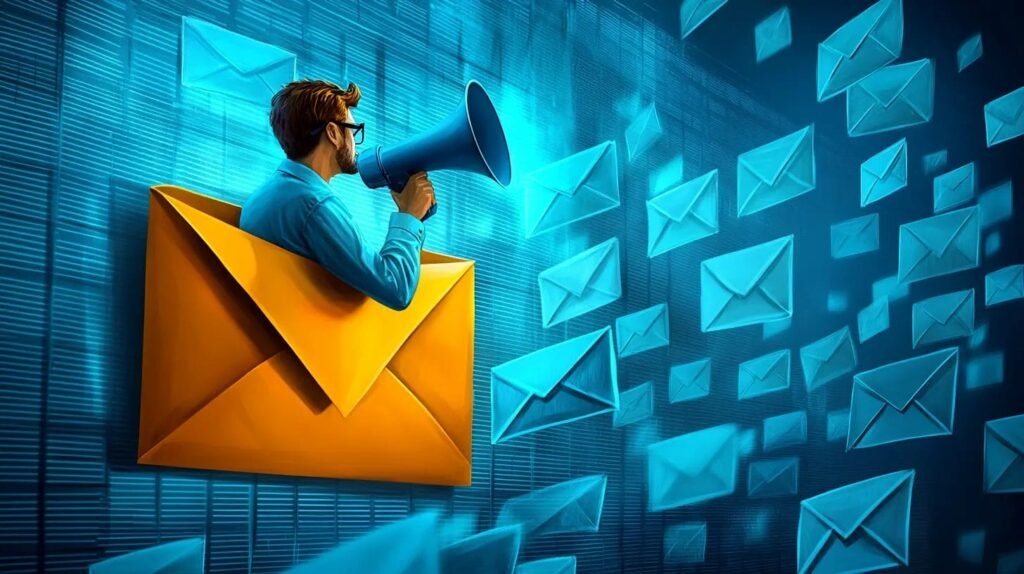In today’s fast-paced digital landscape, businesses are continually seeking effective ways to connect with their audience. Two of the most powerful tools in a marketer’s arsenal are email and SMS marketing. When combined, these channels can create a cohesive and impactful communication strategy that enhances customer engagement and drives conversions. This comprehensive guide delves into the nuances of email and SMS marketing, exploring their benefits, best practices, and how to integrate them effectively.
The Power of Email Marketing
Email marketing remains a cornerstone of digital communication, offering a direct line to your audience’s inbox. Its versatility allows businesses to send newsletters, promotional offers, surveys, and more. According to PCMag, top email marketing platforms like Brevo, Campaigner, HubSpot, and Mailchimp provide robust features that cater to various business needs.
Key Features of Leading Email Marketing Platforms
- Automation and Personalization: Modern platforms offer advanced automation capabilities, enabling businesses to send targeted messages based on user behavior and preferences. Personalization enhances the relevance of emails, leading to higher engagement rates.
- Integration with CRM Systems: Seamless integration with Customer Relationship Management (CRM) systems ensures that all customer interactions are tracked and utilized for more informed marketing decisions.
- Analytics and Reporting: Comprehensive analytics tools provide insights into open rates, click-through rates, and conversion metrics, allowing marketers to refine their strategies continually.
- Template Libraries: A wide array of customizable templates helps in crafting visually appealing emails without the need for extensive design skills.
Best Practices for Email Marketing
- Build a Quality Subscriber List: Focus on growing an organic list of engaged subscribers rather than purchasing contacts. This approach ensures higher engagement and reduces the risk of being marked as spam.
- Craft Compelling Subject Lines: The subject line is the first impression of your email. Make it concise, intriguing, and reflective of the email’s content to encourage opens.
- Optimize for Mobile Devices: With a significant portion of emails being opened on mobile devices, ensure your emails are responsive and display correctly across various screen sizes.
- Test and Analyze: Regularly perform A/B testing on different elements of your emails, such as subject lines, content, and send times, to determine what resonates best with your audience.
- Segment Your Audience: Not all subscribers have the same interests. Segment your audience based on their behavior, preferences, and demographics to deliver more relevant content.
The Rise of SMS Marketing
SMS marketing, or text message marketing, offers a direct and immediate way to reach customers. With high open rates and quick response times, SMS has become an invaluable tool for time-sensitive promotions and alerts. Salesforce highlights that the average response time for text messages is significantly shorter compared to other channels, making it an effective medium for urgent communications.
Advantages of SMS Marketing
- High Engagement Rates: Text messages boast impressive open and response rates, ensuring that your messages are seen and acted upon promptly.
- Immediate Delivery: SMS allows for real-time communication, making it ideal for flash sales, appointment reminders, and urgent notifications.
- Broad Reach: With the ubiquity of mobile phones, SMS can reach a vast audience, including those without smartphones or internet access.
- Cost-Effective: Compared to other marketing channels, SMS campaigns are relatively inexpensive and offer a high return on investment.
Best Practices for SMS Marketing
- Obtain Explicit Consent: Ensure that recipients have opted in to receive SMS communications from your business to comply with regulations and build trust.
- Keep Messages Concise: Due to character limitations, craft clear and to-the-point messages that convey the essential information effectively.
- Include a Clear Call-to-Action (CTA): Guide recipients on the desired next steps, whether it’s visiting a website, redeeming a coupon, or confirming an appointment.
- Respect Timing: Be mindful of the timing of your messages to avoid disturbing recipients during inappropriate hours.
- Personalize Messages: Use recipient names and past interactions to make messages feel tailored and relevant.
Integrating Email and SMS Marketing
Combining email and SMS marketing strategies can create a synergistic effect, leveraging the strengths of both channels to enhance overall communication efforts.
Benefits of Integration
- Consistent Messaging: Deliver a unified brand message across multiple channels, reinforcing your marketing campaigns and increasing brand recall.
- Enhanced Customer Experience: Provide customers with options to receive communications through their preferred channels, improving satisfaction and engagement.
- Increased Reach and Visibility: Utilize both channels to ensure important messages are received, catering to different preferences and behaviors within your audience.
- Improved Campaign Performance: Cross-channel promotions can lead to higher conversion rates by reaching customers through multiple touchpoints.
Strategies for Effective Integration
- Segment Your Audience: Divide your audience based on preferences, behaviors, and demographics to tailor messages appropriately for each channel.
- Coordinate Timing and Content: Align the timing and content of your emails and SMS messages to complement each other without overwhelming recipients.
- Utilize Cross-Promotion: Use emails to encourage SMS opt-ins and vice versa, expanding your reach and providing multiple engagement avenues.
- Leverage Automation Tools: Employ marketing automation platforms that support both email and SMS campaigns, streamlining the creation, scheduling, and tracking processes.
- Monitor and Optimize: Regularly analyze performance data to identify what works best for your audience and make necessary adjustments.
Tools to Facilitate Integration
Several marketing platforms offer integrated solutions for managing both email and SMS campaigns:
- Omnisend: This platform emphasizes SMS support alongside robust email marketing features, providing useful segmentation and reporting tools.
- Zoho Campaigns: Excelling in automation and tracking, Zoho Campaigns integrates seamlessly with other business software, allowing for a cohesive marketing strategy.
- HubSpot: Known for its extensive CRM capabilities, HubSpot provides comprehensive tools for automating and synchronizing email and SMS marketing efforts.
- Brevo (formerly Sendinblue): Offers a seamless blend of email and SMS marketing tools, ensuring businesses can effectively engage their audience across multiple channels.
Case Studies: Successful Email and SMS Integration
Case Study 1: E-Commerce Brand Boosts Sales with Multi-Channel Campaign
A leading online retailer integrated email and SMS marketing for a Black Friday campaign. They sent teaser emails leading up to the sale and followed up with SMS reminders on the day of the event. The result? A 30% increase in sales compared to the previous year.
Case Study 2: Healthcare Provider Improves Appointment Attendance
A healthcare provider utilized email for sending detailed appointment information and SMS for last-minute reminders. This dual approach reduced no-show rates by 25%, improving operational efficiency and patient satisfaction.
Case Study 3: Restaurant Chain Enhances Customer Loyalty
A restaurant chain used email to send monthly newsletters featuring exclusive deals and SMS for same-day offers. This strategy led to a 20% increase in repeat customers and higher customer engagement.
Conclusion
In an increasingly competitive digital marketplace, integrating email and SMS marketing is a powerful strategy for maximizing reach and engagement. By leveraging the strengths of both channels, businesses can ensure timely, personalized, and impactful communication with their audience. The key to success lies in strategic planning, audience segmentation, and continuous optimization. With the right tools and approach, businesses can drive higher conversions, build stronger customer relationships, and stay ahead in the ever-evolving marketing landscape.



